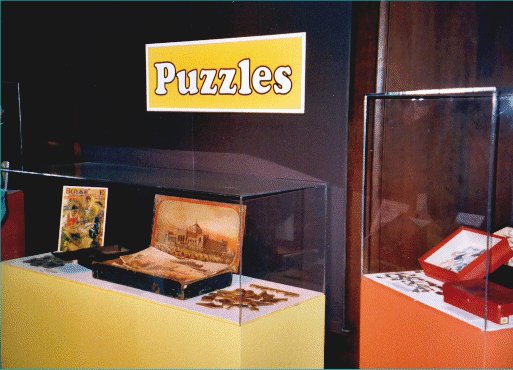

The Boy's life magazine featured an article on how to make jigsaw puzzles for fun or for profit.
This was the original version of the Kings & Queens puzzle by Darton, Dilly and Poultry. Edward Wallis published his own version in 1788 which, based on the number of surviving examples, must have been more popular.
In 1875, George Chinnock started to produce quantities of this large boxed puzzle set for the 1876 Centennial Celebration which was held in Philadelphia. The foot-powered jigsaw was introduced at the Centennial and this was one of the premier souvenirs. There were five puzzles and five picture inserts , each about 20 inches long and 3 inches high, showing the different buildings that were erected for the event. Single puzzles could also be purchased in a special hinged cardboard box that unfolded to display the full picture. For storage, the two halves of the single puzzle were assembled and stacked on top of each other.
The next case shows three puzzles chosen simply for their
cutting styes. The unknown maker puzzle has simple, regularly shaped, "sliced" pieces.
The Tuck's puzzle has interlocking, almost strip cut, pieces with a few simple shapes.
These are contrasted with the Par Puzzle pieces that are randomly cut, with very
intricate shapes.
